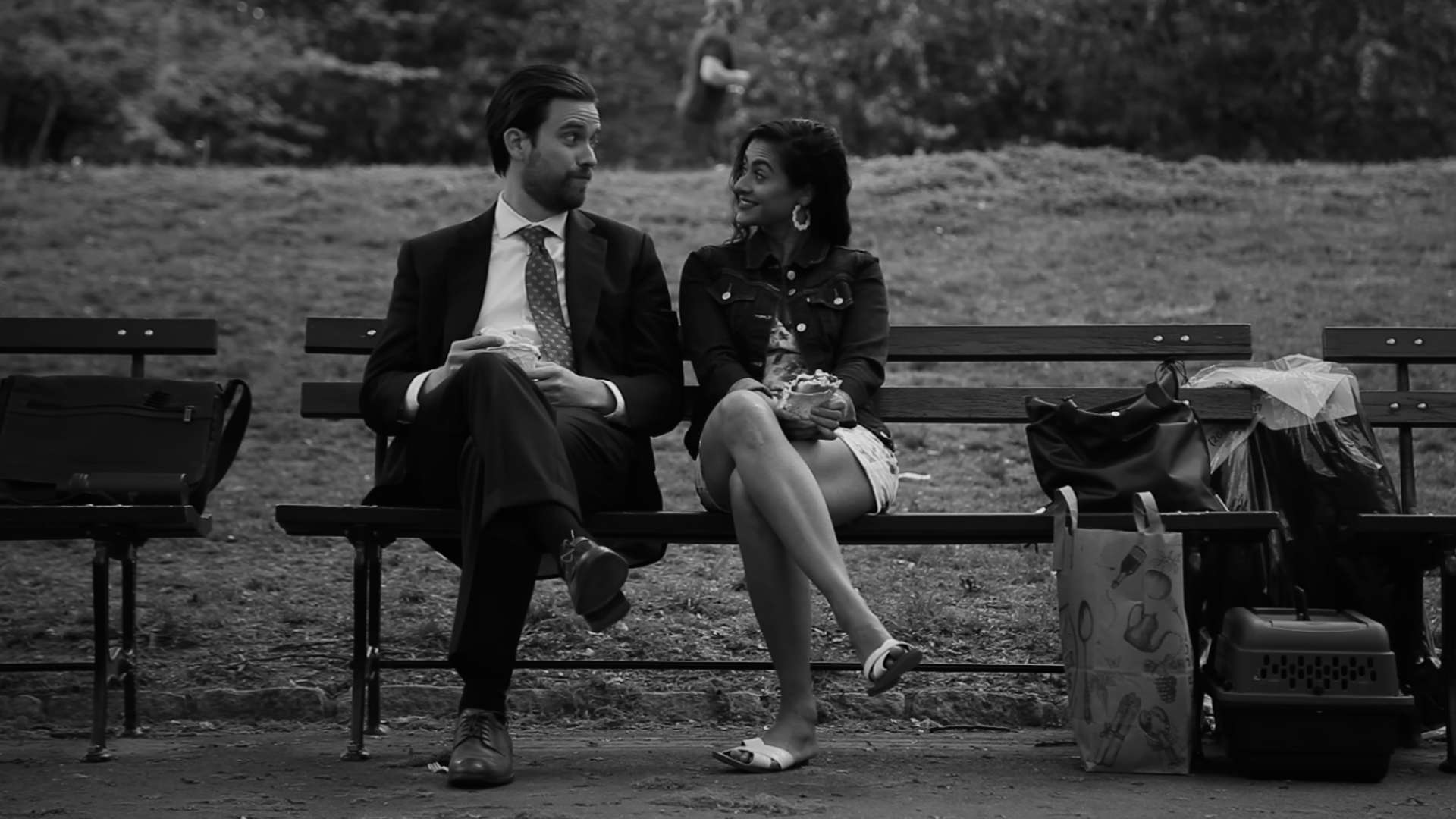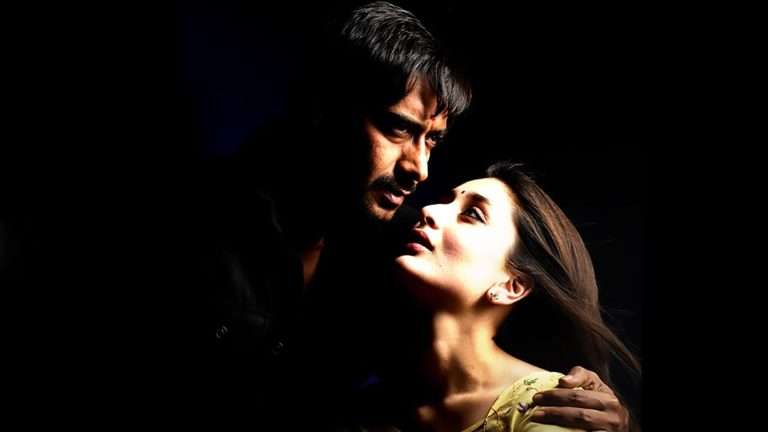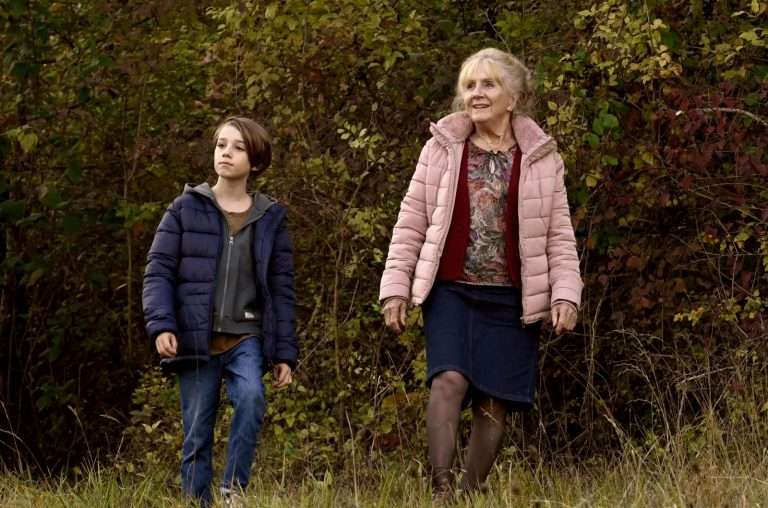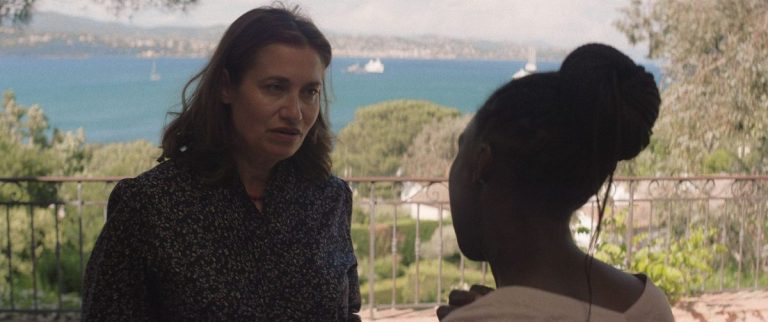“We gave iPhones to Neanderthals.” That is how one of the main characters of Jonathan Smith’s low-budget, low-profile, half-baked (but sweet nevertheless) Manhattan comedy, “Guy Friends,” describes men in general (who are only good at sending d*ck picks and dumping their girlfriends on pathetic excuses a la Garbo Mode ‘I want to have my own space’).
“Guy Friends” is a film that wants to reclaim sisterhood for its main character, even before the generique rolls. We see (in mockumentary mode) short stories of girlies narrating their friendship in color. Then we swiftly switch to the main story in black-and-white (Woody Allen undertones are still there, in cinematography and the soundtrack alike). Young and beautiful but insecure Jamie Sharma (Kavita Jariwala) is an aspiring architect living in New York. Her renowned boss, Mr. Vanderbilt (Patrick Collins), won’t take her creative work seriously, even after working for him for five years. He instead uses her as the errand girl, with vague promises of a more substantial job load.
Jaime’s boyfriend, Patrick (Michael Dahlgren), decides to dump her; suddenly, Jaime lies in the wilderness of male friends who can be equally supportive and competitive. Without developing empathy for female friendship or companionship (one of her chances of encountering a female neighbor turns into disaster), she is left to her own device –. not until she meets Sandy (Katie Muldowney), the brassy girlfriend of Ted (Justin Clark), one of Jaime’s friends and seemingly the only man not falling for Jamie’s charms. Nancy will prove Jaime to be what Walter Matthau was to Jack Lemmon (take your pick in films) and put some hard-won realism and sense of grounding in Jaime’s affair.
The film uses this well-tested, familiar formula but struggles to elevate itself in its initial act. Smith (also the film’s co-scriptwriter, along with Chris Siemasko) rushes too soon to the inciting incident, and we do not conclusively learn what Jaime’s problem is. Perhaps it is the old parochial notion of men who cannot have lady friends (yet Jaime wrongly believes that’s the case) or even Jaime’s need to have a male figure around her at all costs for safety reasons. Her own background story looks thin; also, the lack of LGBT+ characters in the film and a multi-cultural city (no man Jaime associates with is gay), and the use of lousy jokes about a couple being ‘lesbian lovers’ don’t do the film much good.

That said, “Guy Friends” secures its comic episode in the influx of offers Jaime suddenly receives; this is allocated the right timing, sequence, and semi-surrealistic atmosphere. Yet, the film’s merit does not lie in the LOL department but reveals itself in its character presentation. Sandy is the most opulently written character in the movie. She’s full of confidence, dares to speak her mind, has a charmingly naughty attitude, and can display her frailties. Katie Muldowney plays the sidekick to the nines, utilizing every chance to unapologetically express herself and act the way Jaime won’t do. Kavita Jariwala, as Jaime, gets the more subdued, more inward role and expressions. Their trajectory anchors the film emotionally. We wish they’d have more screen time together, but they make a rewarding screen couple.
“Guy Friends” gets better when it doesn’t take itself seriously; that’s why the necessitated follow-up with Patrick and the trajectory of that relationship seems forced (Patrick being too easy a target for the film’s villain). Being a low-budget film, “Guy Friends” has its limits. Yet, its production design could still have benefited from a livelier arrangement in its various interior scenes (all these suitors and bosses’ apartments and offices still feel the same). The black-and-white cinematography and camera would need a more diverse space to explore. As a director and cinematographer, Smith seems anxious to capture every minute reaction in his characters’ faces. However, his group shots (especially the one with Jaime, Sandy, and Ted on the Liberty Island ferry tour) register more truth than any individual reaction shot.
The film’s happy ending is predictably (and warmly so) rendered. In its 84-minute running time, “Guy Friends” tends to be both derivative and heartwarming. It shows off too much of its sources but also tries to build a world for a young woman who cannot work out what her empowerment means. Even though it is a wholeheartedly indie film in terms of its production (Jonathan Smith also assumes the role of editor, producer, and actor in the movie), it flirts with the rom-com greats.
There is a tender scene between Jaime and Sandy after an all-girls night out. At this point, the film suddenly rests its rush to move the plot forward and gives a better insight into its characters, with the camera watching them from above while Sandy and Jaime lie on the couch. We learn about them not by them trying to make things happen but by using their past failures to communicate. The scene provides the most welcome breath of air and character acquaintance in a film that won’t match its cinematic heroes yet still gives this old-time comfortable feeling of relationships that need to go right instead of awry, especially between girls.






